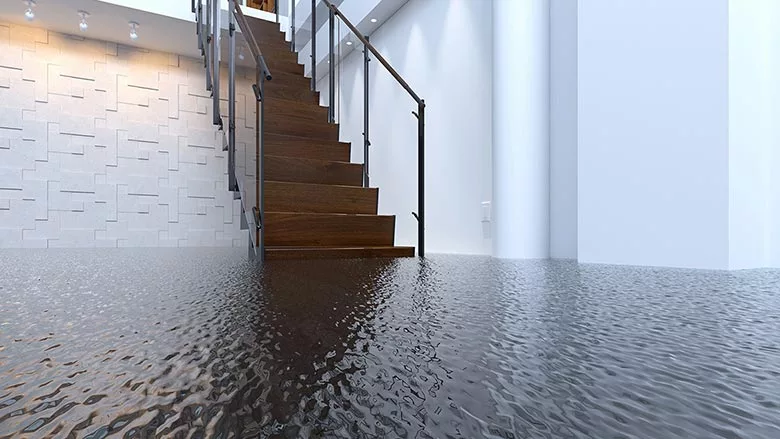Our Industry Is Drying Buildings Backwards

Photo credit: onurdongel / iStock / Getty Images Plus via Getty Images
When I joined the industry years ago, I started asking questions and quickly realized that we could not answer many of them. It became my life’s mission to find solutions and answers to drying out structures. Regardless of what type of equipment is being used, most restorers are guessing as to what is going to happen within these wet buildings. It is not the restorer’s fault for not realizing the inaccuracies of this thinking; it’s the lack of proper training along with the information provided to us restorers by the industry.
I have found one common theme through educating thousands of restorers, instructors and consultants. That is that they know one thing: To check the moisture content of the materials on a loss, no matter how you are checking the moisture content (meters, screws, etc.). Is it bad to check the moisture content of building materials on a water loss? No! In fact, that is the only metric we have that tells us when the building is back to acceptable levels. But think about this: What is driving the rate at which these materials are brought back to acceptable equilibrium levels? It’s the conditions that these materials are exposed to on these losses, and what is driving these conditions is the performance of the equipment being used on these losses.
The rate in moisture content change is directly related to these conditions, which are achieved by the equipment within the structure. The moisture content or temperature of the material is secondary or is a result of this. However, we as an industry only know how to check these moisture content levels and have no insight into controlling or evaluating the primary metrics that are determining the length of time it takes to get these materials back to acceptable levels. Our industry is drying completely backwards!
The best way to compare the approach our industry takes to drying these wet buildings is to look at a clothes dryer. For example, your clothes normally take 25 to 30 minutes to dry and then suddenly, these same clothes start taking an hour to an hour and a half to dry. Currently, our industry’s approach to this would be to keep checking the clothes every 10 minutes and saying, “Nope they are still wet, we will give them another 10 minutes,” and doing this until they finally feel dry. Our industry knows how to feel the clothes to check if they are still wet or not and that is it.
Instead, we should be checking the temperatures coming off the heating element, the airflow through the dryer and relationship of the surrounding conditions to the drying times. In this scenario, it makes sense that they would do this. However, in our industry that is not what we have done. All we do is continue to check the clothes to see when they are dry and when they feel dry, they are dry. Again, this is completely backwards!
You have probably heard that on these losses you’re supposed to get the temperature of the materials up as high and as fast as possible. This goes back to my example; you’re merely feeling the clothes to see if they are wet or not. This information is just as vague as the advice of, “We have a wet building and what you want to do is remove this water from the wet materials.” Of course. But what causes the temperature of the materials to rise as quickly as possible to ambient? It is directly related to the evaporation ability of the air in contact with these materials and the velocity of the airflow above them.
Our industry has never been able to evaluate or measure the evaporation ability of the air within these wet buildings factoring in both the free and bound moisture within these materials. This has driven me crazy for years because if you think about it, our job description is that we are professional evaporators. Even worse, we have never been able to quantify or evaluate the optimal performance of our drying equipment (LGRs, HVACs, desiccants and heaters) to see if they are working correctly or the exact impact that the outside has on our drying progress, or how to control a building. We cross our fingers, hope for the best and go feel the clothes until they are dry.
Enthalpy Evaporation Evaluation (E3) finally gives us the answers to all these questions and allows us as restorers to quit guessing on the most important metrics on any water loss and for the first time gives meaning to all these numbers we have been writing down. I spent years answering all these questions through proven algorithms that finally give control to the restorer. We can now evaluate the exact evaporation ability of any condition with E3. Every day we know what that value within the drying chamber should be on the loss with any type of drying equipment, class of loss or outside conditions to ensure that the drying process is working at an optimal efficiency. It ranks at the beginning of the job exactly which equipment types or setups would work best for drying and by how much greater. E3 also evaluates the exact expected performance of any type of equipment in all conditions to ensure that it is working properly, and for the first time, with other extremely crucial algorithms, we know how to control any type or size of a building in all conditions.
The better these numbers look, the faster we reach acceptable moisture content levels on any loss with any material. This gives meaning and purpose to the restorer’s methods and eliminates all the opinions regarding the three-day drying myths and mumbo jumbo. If I were to hit my E3 targets every single day on the loss and it took seven days to dry, then I am billing for seven days and deserve to get paid for those seven days. By the same token, if you never hit any of your chamber targets, then you made a major mistake and shouldn’t get paid for the drying time. This is designed to push the professionalism of our industry, to give meaning to all drying methods and do away with the restorers who don’t want to improve our industry. This also eliminates the arbitrary, vague and unfounded opinions and arguments of insurers and consultants to the restorer, and holds everyone and all parties accountable.
Learn more about the techniques used in structural drying
We are in the works of integrating all these algorithms into most major project management software and moisture field tool software platforms within our industry. This will make the application of these algorithms extremely simple for the restorer and provide them with a professional report for the client and insurer.
Through all the years of working with restorers to better our industry, I am excited for the future. I love what we do, so let’s keep moving forward!
Looking for a reprint of this article?
From high-res PDFs to custom plaques, order your copy today!







